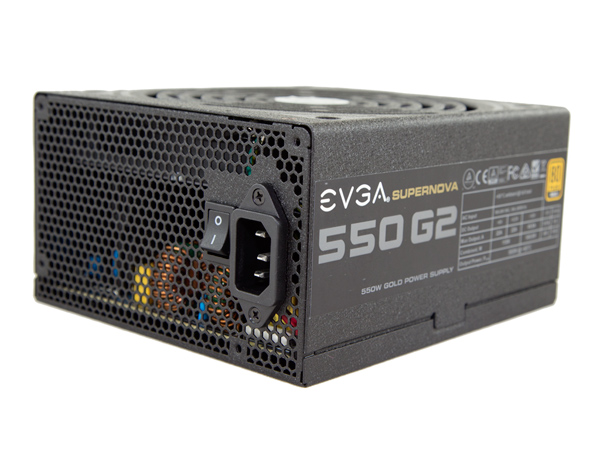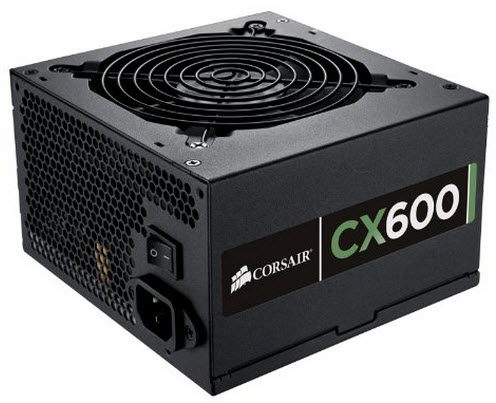Seasonic G-Series 450W PSU Review
Seasonic's G series consists of reliable, high-performance PSUs. Today, we're reviewing the G-450 with 450W capacity, which features a semi-modular cabling design.
Why you can trust Tom's Hardware
Load Regulation, Hold-Up Time And Inrush Current
To learn more about our PSU tests and methodology, please check out How We Test Power Supply Units.
Primary Rails And 5VSB Load Regulation
Load Regulation testing is detailed here.








Hold-Up Time
Our hold-up time tests are described in detail here.


The hold-up time easily goes above the minimum dictated by the ATX spec.
Inrush Current
For details on our inrush current testing, please click here.


The registered inrush current is pretty high; however, we should note that we repeated the test procedure several times and took the worst-case scenario into consideration in the charts above.
Load Regulation And Efficiency Measurements
The first set of tests reveals the stability of the voltage rails and the PSU's efficiency. The applied load equals (approximately) 10 to 110 percent of the maximum load the supply can handle, in increments of 10 percentage points.
Get Tom's Hardware's best news and in-depth reviews, straight to your inbox.
We conducted two additional tests. During the first, we stressed the two minor rails (5V and 3.3V) with a high load, while the load at +12V was only 0.10A. This test reveals whether a PSU is Haswell-ready. In the second test, we determined the maximum load the +12V rail could handle with minimal load on the minor rails.
| Test | 12V(A/V) | 5V(A/V) | 3.3V(A/V) | 5VSB(A/V) | PowerDC/AC(W) | Efficiency(%) | Fan Speed(RPM) | Fan NoisedB(A) | TempIn/Out(°C) | PF/AC (V) |
|---|---|---|---|---|---|---|---|---|---|---|
| 1 | 1.897A | 1.974A | 1.965A | 0.995A | 44.73 | 80.03 | 645 | 28.0 | 37.90 | 0.979 |
| 12.200V | 5.073V | 3.354V | 5.008V | 55.89 | 41.43 | 115.1V | ||||
| 2 | 4.833A | 2.959A | 2.959A | 1.200A | 89.75 | 86.12 | 820 | 31.3 | 38.62 | 0.995 |
| 12.183V | 5.064V | 3.343V | 4.997V | 104.22 | 42.17 | 115.1V | ||||
| 3 | 8.117A | 3.463A | 3.475A | 1.400A | 134.83 | 87.85 | 1050 | 34.8 | 38.88 | 0.995 |
| 12.166V | 5.057V | 3.334V | 4.989V | 153.48 | 42.69 | 115.1V | ||||
| 4 | 11.405A | 3.961A | 3.967A | 1.605A | 179.74 | 88.53 | 1350 | 43.5 | 39.87 | 0.996 |
| 12.150V | 5.049V | 3.324V | 4.977V | 203.03 | 43.97 | 115.1V | ||||
| 5 | 14.362A | 4.968A | 4.976A | 1.811A | 224.75 | 88.70 | 1690 | 44.8 | 40.23 | 0.997 |
| 12.132V | 5.037V | 3.314V | 4.967V | 253.38 | 44.62 | 115.1V | ||||
| 6 | 17.326A | 5.965A | 5.994A | 2.015A | 269.68 | 88.53 | 1955 | 49.4 | 40.82 | 0.997 |
| 12.116V | 5.026V | 3.303V | 4.954V | 304.61 | 45.56 | 115.1V | ||||
| 7 | 20.298A | 6.978A | 7.017A | 2.223A | 314.70 | 88.20 | 1960 | 49.4 | 41.48 | 0.997 |
| 12.100V | 5.017V | 3.291V | 4.943V | 356.80 | 46.45 | 115.1V | ||||
| 8 | 23.276A | 7.989A | 8.050A | 2.430A | 359.67 | 87.76 | 1960 | 49.4 | 42.93 | 0.998 |
| 12.085V | 5.007V | 3.279V | 4.931V | 409.84 | 48.31 | 115.1V | ||||
| 9 | 26.692A | 8.501A | 8.593A | 2.435A | 404.74 | 87.40 | 1985 | 49.5 | 43.67 | 0.998 |
| 12.070V | 4.998V | 3.269V | 4.924V | 463.09 | 49.41 | 115.1V | ||||
| 10 | 30.058A | 9.029A | 9.107A | 2.541A | 449.56 | 86.86 | 1985 | 49.5 | 44.46 | 0.998 |
| 12.055V | 4.988V | 3.260V | 4.913V | 517.58 | 50.54 | 115.1V | ||||
| 11 | 33.835A | 9.039A | 9.129A | 2.545A | 494.55 | 86.32 | 1985 | 49.5 | 45.53 | 0.998 |
| 12.039V | 4.981V | 3.253V | 4.908V | 572.95 | 51.92 | 115.1V | ||||
| CL1 | 0.098A | 12.009A | 12.005A | 0.004A | 100.92 | 82.91 | 1955 | 49.4 | 43.84 | 0.995 |
| 12.178V | 5.019V | 3.285V | 5.007V | 121.72 | 48.14 | 115.1V | ||||
| CL2 | 36.962A | 1.003A | 1.003A | 1.001A | 458.95 | 87.63 | 1985 | 49.5 | 44.97 | 0.998 |
| 12.056V | 5.026V | 3.307V | 4.968V | 523.75 | 51.16 | 115.1V |
The load regulation isn't the best for a PSU in this category, but all of the rails still managed to stay within three percent, even under the tough conditions we apply during our tests. Also, the G-450 didn't manage to meet the 80 PLUS Gold efficiency requirements. However, it's worth mentioning that the 80 PLUS certifications are conducted at low ambient temperatures of 23 C (73 F). In comparison, we conduct our tests at above 40 C (104 F), and during full load tests, the temperatures inside our hot box can exceed 45 C (113 F).
Up to the 30 percent load test, the output noise was pretty low. Beyond 30 percent, though, the noise went above 40 dB(A) and, in some tests, reached almost 50 dB(A). Clearly, this PSU can be very noisy. Seasonic should have used a larger or lower-speed fan.
Current page: Load Regulation, Hold-Up Time And Inrush Current
Prev Page A Look Inside And Component Analysis Next Page Efficiency, Temperature And Noise
Aris Mpitziopoulos is a contributing editor at Tom's Hardware, covering PSUs.
-
InvalidError 0.4 ohm Rdson is not that bad for primary-side FETs where switching losses tend to be much worse than on-losses.Reply
Also, FETs with better on-resistance usually have larger gate charge, which means you end up needing more gate drive power to achieve the same switching performance. Saving 3W on full-load on-losses does not sound as good if it costs you 2W in gate drive regardless of load.
Using FETs with lower on-resistance does not necessarily improve overall efficiency by much. -
TechyInAZ Good read. I personally have the 550W version of that PSU and it works very well. Very quiet too, however my entire system doesn't go beyond 350W at max load.Reply
BTW...The 550W version is usually only $3-$5 more than the 450W. I've never seen the price change either, so it is a bit silly to buy the 450W version if the 550W is always only $5 more. -
Dunlop0078 I also have the 550watt version, its been going strong for about two years now its very quiet even under load I think I pull about 450watts or so when I have all my overclocks applied. It has been totally stable not a single problem with my PC or the psu since I bought it.Reply
However I think the price should be lowered a bit for the 550watt version because now it has to compete with the likes of the EVGA 550 G2 which is about the same price but it seems to perform a bit better and comes with a 10 year warranty. -
TechyInAZ Reply16760449 said:I also have the 550watt version, its been going strong for about two years now its very quiet even under load I think I pull about 450watts or so when I have all my overclocks applied. It has been totally stable not a single problem with my PC or the psu since I bought it.
However I think the price should be lowered a bit for the 550watt version because now it has to compete with the likes of the EVGA 550 G2 which is about the same price but it seems to perform a bit better and comes with a 10 year warranty.
10 year warranty!!?? I've been using EVGA graphics cards for years now, I think ill start buying EVGA PSUs now. :D -
Dunlop0078 Reply16760449 said:I also have the 550watt version, its been going strong for about two years now its very quiet even under load I think I pull about 450watts or so when I have all my overclocks applied. It has been totally stable not a single problem with my PC or the psu since I bought it.
However I think the price should be lowered a bit for the 550watt version because now it has to compete with the likes of the EVGA 550 G2 which is about the same price but it seems to perform a bit better and comes with a 10 year warranty.
10 year warranty!!?? I've been using EVGA graphics cards for years now, I think ill start buying EVGA PSUs now. :D
Actually im wrong on that its a 7 year warranty for the 550watt model (still very good in my opinion) the 750watt g2 and above have the 10 year. -
10tacle I know Seasonic is good and an OEM to PSUs for Corsair and whatnot, but I was an unlucky one. My 620W S12II crapped out on an older backup rig after about a year of light use, maybe 250 hours. Unfortunately I voided the 5-year warranty when I had to break the screw seal and open it to get a screw out that accidentally fell in (PC was unplugged when that happened). I figured I'd never need to worry about dealing with a warranty RMA anyway since in nearly 20 years of PC building I've never had one die early on me. WRONG.Reply -
InvalidError Reply
Murphy strikes again!16760681 said:I figured I'd never need to worry about dealing with a warranty RMA anyway since in nearly 20 years of PC building I've never had one die early on me. WRONG.
-
Blueberries This PSU isn't bad but I don't see why anyone would want to pay in the $70's for it when there are gold-- almost platinum rated Leadex PSUs for $80-$90.Reply
The build quality is what I've come to expect from SeaSonic. Very well built with mostly Nippon Chemi-Con capacitors. Rubycon is also a good brand, and I like to see Infineon MOSFETs in PSUs. This PSU should last forever but isn't very efficient compared to similarly-priced competition. -
turkey3_scratch Reply16760497 said:16760449 said:I also have the 550watt version, its been going strong for about two years now its very quiet even under load I think I pull about 450watts or so when I have all my overclocks applied. It has been totally stable not a single problem with my PC or the psu since I bought it.
However I think the price should be lowered a bit for the 550watt version because now it has to compete with the likes of the EVGA 550 G2 which is about the same price but it seems to perform a bit better and comes with a 10 year warranty.
10 year warranty!!?? I've been using EVGA graphics cards for years now, I think ill start buying EVGA PSUs now. :D
Yeah, aside from the fantastic quality, that was another reason I purchased the G2 over any other PSU. -
tsnor "... Seasonic doesn't use a fully modular design in its G series to keep production costs low. Of course, it would be nice if the company changed its strategy and went all-modular on its G-series models since many competing PSUs are, in fact, fully modular...."Reply
Or maybe they
(1) know that people will always use the permanent cables that power the MB
(2) know that two less connectors is a good thing for product reliability
(3) want to ship a product for people like me that prefer this configuration to a fully modular configuration


